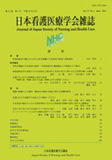Japanese
English
- 有料閲覧
- Abstract 文献概要
- 参考文献 Reference
<要旨>
転倒要因の一つである履物に関する基礎的データを得るために、履物の種類による静的・動的重心動揺の相違を明らかにした。対象は健康な女子大学生8名で、重心動揺測定装置を用いて、静的重心動揺とクロステストによる随意的重心移動能力を測定した。静的重心動揺の総軌跡長では有意差は認められなかったが、外形面積は履物間で有意差が確認され、サンダルが裸足よりも、パンプスが裸足とスリッパよりも有意高値であった(p<0.05)。クロステストのA-P%(足長に対する前傾時と後傾時の平均合算距離の割合)とM-L%(両足間距離に対する右傾時と左傾時の平均合算距離の割合)ともにグループ間で有意差が確認され、A-P%のスリッパがサンダルよりも有意に高値であった(p<0.05)。以上より、サンダルの直立姿勢位への影響と、立位時のスリッパ着用による前後重心移動の増大と活用の可能性が示唆された。
<abstract>
We elucidated differences in static and dynamic postural sway by type of footwear in order to obtain basic data regarding footwear which is known as a factor of falls. Subjects were a total of eight healthy female university students, their static postural sway and their ability to voluntarily shift their center of gravity(the cross test) was measured using a posturography device. Although no significant differences by type of footwear were observed for sway path length on static posturography, external area was significantly different by type of footwear, and significantly bigger(p< 0.05) for sandals compared to barefoot, and for pums to barefoot and slippers. In addition, significant differences were observed for A-P% on the cross test(proportion of mean total distance during anterior and posterior tilting with respect to foot length) and M-L%(proportion of mean total distance during rightward and leftward tilting with respect to the distance between feet). The A-P% was higher for slippers than sandals(p<0.05). These findings suggest the influence of sandals upon upright posture tilting, and the possibility of providing and using greater dynamic postural stability of anterior and posterior tilting by slippers.
Copyright © 2011, Japan Society of Nursing and Health Care All rights reserved.


